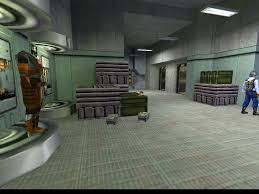


Valve was disappointed with the lack of innovation in the FPS genre, and aimed to create an immersive world rather than a "shooting gallery." Unlike other games of the time, the player has almost uninterrupted control of the player character, and the story is told mostly in scripted sequences rather than cutscenes. The gameplay consists of combat, exploration, and puzzle-solving. Players assume the role of Gordon Freeman, a scientist who must escape the Black Mesa Research Facility after it is invaded by aliens during an experiment gone wrong. It was Valve's debut product and the first game in the Half-Life series. Those interested in giving it a whirl will first need to acquire a copy of the original Half-Life 1 on Steam then follow the instructions provided.ĭigital Foundry's Alex Battaglia took at look at Tsyrendashiev's Quake ray tracing mod at the end of last year and came away highly impressed, calling it "incredible" and "less a mod and more a full-on RT remaster for one of PC's finest games".Half-Life is a 1998 first-person shooter (FPS) game developed by Valve and published by Sierra Studios for Windows.


With the hardware accelerated ray tracing, it is possible to calculate global illumination, reflections, refractions, soft shadows and other visual effects with interactive framerates."Īs Tsyrendashiev previously promised, the playable release version of Half-Life: Ray Traced has been made available to download via Github. Introducing the project last year, Tsyrendashiev explained, "Half-Life: Ray Traced integrates the real-time path tracing into the original Half-Life (1998). Half-Life: Ray Traced is the work of modder Sultim Tsyrendashiev - who previously created similar, extremely well-received ray tracing mods for the likes of Series Sam 1, Doom, and Quake - and is based on another previous attempt at Half-Life ray tracing. Half-Life: Ray Traced, a new mod adding hardware accelerated ray tracing to Valve's seminal first-person shooter, is now available to download following its reveal last summer.


 0 kommentar(er)
0 kommentar(er)
